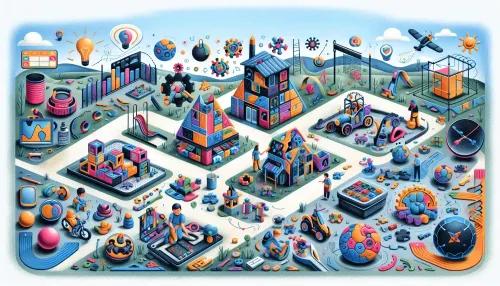
Decoding Emotional Landscapes: The Art and Science of Reading Autistic Children's Emotions

Autism is a complex neurodevelopmental condition that manifests in various ways, including unique emotional expressions. Understanding and interpreting the emotional cues of autistic children can be both challenging and rewarding. In this comprehensive guide, we will delve into the intricate world of decoding emotional landscapes in autistic children, exploring the art and science behind recognizing, understanding, and fostering their emotional well-being.
Exploring the Challenge: Recognizing Non-Traditional Emotional Cues in Autistic Children
Recognizing emotions in autistic children often requires a nuanced approach. While conventional emotional cues such as facial expressions and tone of voice may not always align with typical patterns, autistic children convey their feelings through alternative channels. These can include body language, repetitive behaviors, or specialized interests. Understanding these non-traditional cues is essential for caregivers and educators to effectively connect with and support autistic children in navigating their emotional landscapes.
Beyond the Mask: Understanding the Myriad Ways Autistic Children Express Joy and Distress
Autistic children experience and express emotions in diverse and nuanced ways. Their expressions of joy, distress, excitement, or anxiety may differ from those of neurotypical individuals. It is crucial to recognize and appreciate these unique manifestations, which may involve unconventional gestures, stimming behaviors, or intense focus on specific topics. By acknowledging the myriad ways autistic children express their emotions, caregivers can create supportive environments that honor and validate their feelings.
Bridging Gaps: Techniques for Caregivers to Connect Emotionally with Autistic Children
Building emotional connections with autistic children requires patience, empathy, and specialized techniques tailored to their individual needs. Caregivers can employ strategies such as visual supports, social stories, and sensory-based activities to bridge communication gaps and establish meaningful connections. By embracing a strengths-based approach and leveraging the child's interests and preferences, caregivers can foster a deeper emotional bond while respecting their unique mode of expression.
Emotional Literacy 101: Tools for Autistic Children to Identify and Express Their Feelings
Empowering autistic children with the tools to identify and express their emotions is a fundamental step towards enhancing their emotional well-being. Visual emotion cards, personalized emotion journals, and interactive emotion scales are valuable resources that enable autistic children to recognize and articulate their feelings. By nurturing their emotional literacy through tailored interventions, caregivers can promote self-awareness and effective communication, laying a foundation for emotional growth.
Mapping the Emotional Blueprint: The Importance of Predictability and Routine
Establishing predictability and routine plays a pivotal role in supporting the emotional well-being of autistic children. Predictable environments provide a sense of security and stability, reducing anxiety and facilitating emotional regulation. Visual schedules, structured daily routines, and consistent transition strategies contribute to creating an emotionally supportive framework that aligns with the child's need for predictability.
The Role of Sensory Environments in Modulating Emotional Responses
Sensory environments significantly influence the emotional experiences of autistic children. Sensory sensitivities or sensory-seeking behaviors may impact their emotional regulation and overall well-being. Caregivers can curate sensory-friendly spaces by incorporating elements such as tactile materials, soothing lighting, and designated quiet areas to accommodate individual sensory needs. A thoughtfully designed sensory environment can mitigate sensory challenges and promote positive emotional responses.
States of Overwhelm: Recognizing and Alleviating Emotional Overload in Autism
Autistic individuals may experience states of emotional overwhelm due to sensory overload, social anxiety, or environmental stressors. Caregivers must be adept at recognizing signs of emotional overload such as heightened agitation or withdrawal and implementing effective strategies to alleviate distress. Providing calming sensory tools, offering quiet retreat spaces, and practicing mindfulness techniques are valuable approaches for supporting autistic individuals during periods of emotional overwhelm.
Fostering Emotional Growth: Strategies to Enhance Socio-Emotional Development
Enhancing socio-emotional development in autistic children involves a holistic approach that integrates social skills training, peer interaction opportunities, and tailored interventions focusing on empathy and perspective-taking. Engaging in collaborative activities, promoting self-regulation strategies, and cultivating a supportive social network contribute to fostering emotional growth in autistic children. By nurturing their socio-emotional development within inclusive environments, caregivers play a pivotal role in empowering autistic individuals to navigate social dynamics with confidence.
HorizonsMind is committed to fostering understanding and support for autistic children's emotional well-being. By embracing the art and science of decoding emotional landscapes in autism, caregivers can create enriching experiences that honor the diverse emotional expressions of autistic children while nurturing their holistic development.


